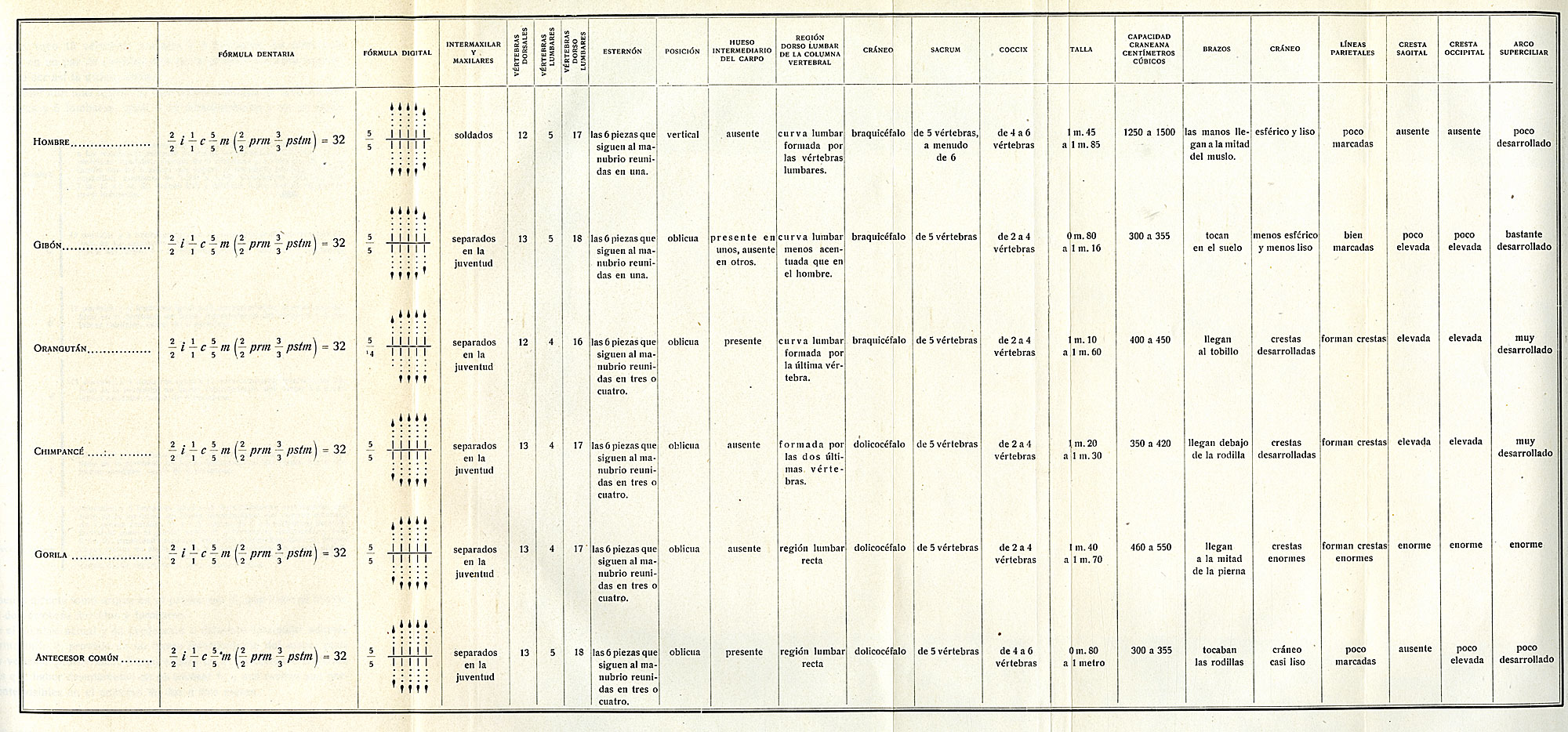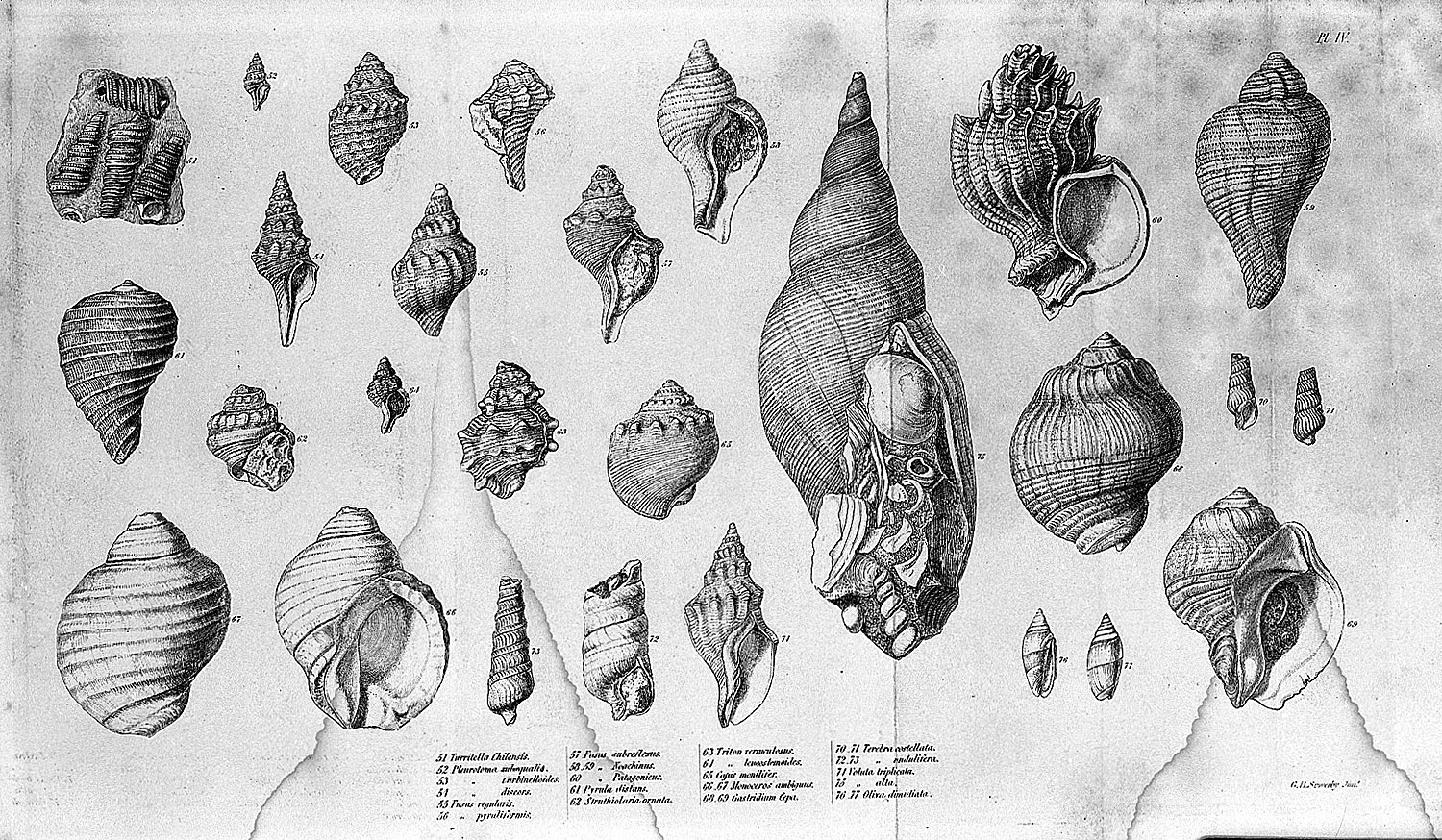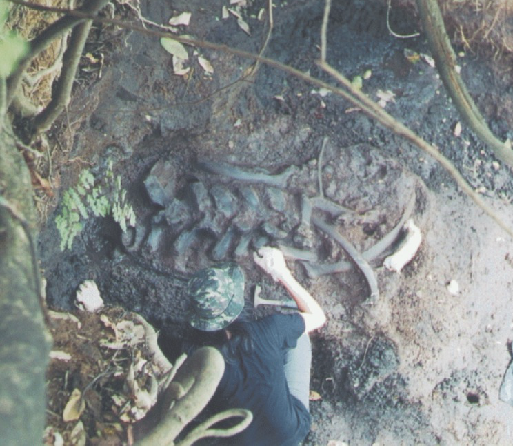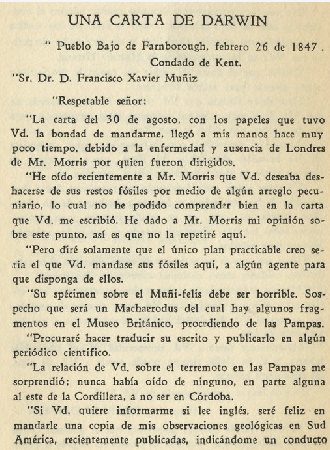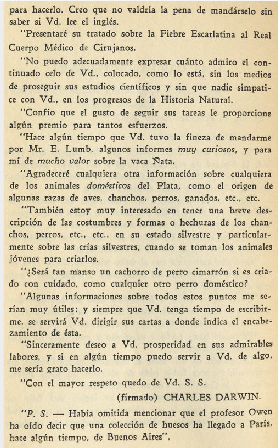Specific local circumstances often have a decisive role in shaping a nation's scientific specializations. To list just a few examples: Brazilian public health officials in the early twentieth century were expert in fighting tropical diseases, sixteenth century Mexicans were at the forefront of new mining techniques, twentieth century Peruvian physicians studied the effects of high altitude on human health, and Caribbean agriculturalists perfected how sugar was grown and refined. All of these reflect the Latin American preference for the useful arts, applied sciences (medicine, agriculture, mineralogy, etc.) that are developed locally for local benefit.
Latin American paleontology, especially that of Argentina, also grew out of local conditions: the area has some of the richest and most unique fossil deposits found anywhere in the world. The fossilized bones, eggs, teeth, and footprints of dinosaurs and bizarre mammals that lived tens of millions of years ago have piqued the interest of Argentine natural historians since the mid nineteenth century. Yet it is difficult to make the case that paleontology is a useful art--exhuming long-extinct species really does nothing to improve life in one's country. It can, however, foster a sense of pride in a national past, one that goes well beyond recorded history to the very foundations of animal and human life.
Interest in Latin American fossils can be traced back to the sixteenth century, but it reached its first mature phase in the nineteenth century when Charles Darwin collected and studied Argentine fossils during the voyage of the Beagle. According to historian of science Sandra Herbert, the ancient remains of giant sloths, toed horses, and marine life (found in the Andes) made him ponder both the geological history of the earth and the reasons why these and other fauna went extinct and others took their place. The fossils of South America played an important part in the eventual formulation of his theory of natural selection (Herbert 2005). Evolutionism would then make its way back to Latin America in the late nineteenth century, where it helped promulgate many scientific (and pseudo-scientific) notions about the nature of its people, society, and destined greatness.
In late nineteenth century Argentina, both the fossils themselves and the science of interpreting and displaying them became caught up in the scientific nationalism so prevalent in that era. Paleontologists like Florentino Ameghino (seen in the sources) used the fossil record to bolster the primacy of Argentina in the biological history of humankind. His patriotic and (we now know) scientifically untrue theory that the ancestors of homo sapiens lived in Argentina is the most extraordinary example of this paleontological nationalism (Ameghino 1906).
Since the 1880s, both Latin American and foreign paleontologists have devoted many efforts to the discovery, extraction, presentation, and study of South American fossils. Indeed, the extraordinary nature of the fossils themselves is responsible for this. The fauna of Latin America were (and are) different from that of the rest of the world, and have long posed difficult questions about that region's place in the overall evolution of life, especially that of vertebrate mammals. The stratified sedimentary beds of Patagonia (seen in the source "Dinosaur Eggs in Patagonia") help paleontologists coordinate the lifespans of various taxa with corresponding geological eras while fossils in Central America provide key insights as to how and when the Great American Faunal Interchange merged the life forms of North and South America (see the source on paleontology in El Salvador) (Cisneros 2005).
Although these extinct species would not have known or cared that their bones would become the subject of intellectual disputes, the idea of who owned these fossils, in which institutions (and in which manner) they should be displayed, and who was most qualified to posit scientific "facts" based on their (often very scanty) evidence would become important issues by 1900. Historian Irina Podgorny notes how, circa 1900, many U.S. and European experts considered Argentinean paleontologists little more than field workers fit to collect and store fossils that were best interpreted by foreigners. Foreign expeditions came to dominate Latin American paleontology by the mid twentieth century, and many of the best specimens ended up in U.S. museums and discussed in U.S. journals (as in the source Astrapotherium magnum). There was even conflict within Argentina, where the bickering between individuals and institutions (especially the Museo de La Plata and the Museo Nacional de Buenos Aires) actually led paleontologists to keep many of their findings secret so as to prevent others from harvesting their fossil beds or disputing their assertions (Podgorny 2005). Like Latin America's many mineral, ethnological, and botanical treasures, its fossils have been coveted by many distinct groups, and the realities of social and political power are never far from their contests.
Latin America continues to yield fantastic paleontological finds; dozens of new species (and even several new genuses and families) of vertebrate mammals and dinosaurs have been discovered in the last twenty years. Due to ongoing political strife, the lack of local scientific infrastructures, and fact that much of Latin America remains only minimally known, the region promises to hold many more secrets as well. Just as the mysteries of fossils inspired scientists like Charles Darwin, their enigmatic clues will continue to spark interest among scientists and laypeople about the very history of the earth and life itself. Indeed, when compared to the antique majesty of a 90 million year old dinosaur skeleton, the history of human beings, much less their scientific pursuits in Latin America, begins to seem of little moment.
Questions for Further Exploration:
- Compare Argentine paleontology in the age of positivism (c. 1880-1915) with another contemporary Argentine science (criminology, medicine, anthropology, etc.). Consider such things as their social impact, nationalism, the idea of progress, positivism, institutions, international recognition, race, and gender.
- For those who can read Spanish: Read the source Una Carta de Darwin. What can a historian take from this source that would be useful to understanding paleontology, international scientific relations, European attitudes about Latin America, or Argentine science in the mid nineteenth century? Is this a "good" historical source? Why or why not?
- Examine Charles Darwin's and Florentino Ameghino's understandings of paleontology. Use the sources in this topic as well as primary source writings by them both (each have published works available at the Biodiversity Heritage Library, http://www.biodiversitylibrary.org.
- U.S. paleontological expeditions to Latin America have done much to further the science on the whole, but it has also promulgated issues of neo-colonialism and who has the right to use Latin America as a "field" of research. How do expeditions by paleontologists compare with other scientific expeditions, like those of Darwin, Humboldt, and others (see the Scientific Expeditions topic)? Make an argument in your response.
- Argentina is the Latin American country most well known for paleontology, but it is certainly not the only one. The sources have some information on El Salvador, but Brazil, Chile, Peru, Bolivia, and many other countries have made interesting contributions to the field. Research the history of paleontology in one of these countries. Consider both scientific aspects (like how a discovery changed the understanding of a genus' evolution) and social aspects (like national pride, neocolonialism, international exchange of science).
Further Reading:
Ameghino, Florentino. "Les Formations Sedimentaires du Cretace Superieur et du Tertiare de Patagonie avec un Parallele entre leurs Fraunes Mammalogiques et celles de l'Ancien Continent." Anales del Museo Nacional de Buenos Aires. 3: 8: (1906): 1-568.
Cisneros, Juan Carlos. "New Pleistocene Vertebrate Fauna from El Salvador." Revista Brasiliera de Paleontologia. 8: 3 (2005): 239-255.
Herbert, Sandra. Charles Darwin, Geologist. Ithaca: Cornell University Press, 2005.
Lopes, Maria Margaret and Irina Podgorny. "The Shaping of Latin American Museums of Natural History, 1850-1990." Osiris, 2nd Series. 15, Nature and Empire: Science and the Colonial Enterprise (2000): 108-118.
Podgorny, Irina. "Bones and Devices in the Constitution of Paleontology in Argentina at the End of the Nineteenth Century." Science in Context. 18: 2 (2005): 249-283.
---. "De la santidad laica del cientifico: Florentino Ameghino y el espectaculo de la ciencia en la Argentina moderna." Entrepasados. 13 (1997): 37-61.
Simpson, George Gaylord. Discoverers of the Lost World: An account of some of those who brought back to life South American mammals long buried in the abyss of time. New Haven: Yale University Press, 1984.
---. Splendid Isolation: The Curious History of South American Mammals. New Haven: Yale University Press, 1980.
